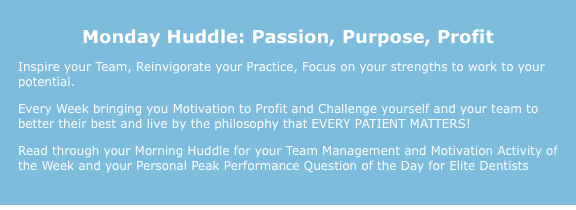Now, we introduce THE SUPER HERO – The Doctor!
Yes, I know you know that I always talk about the Doctor being the Super Hero. This is because so many doctors spend all their time being the villain by talking about the problems patients have and all the clinical mumbo jumbo that patients do not want to hear (otherwise, they would be working in your office right now).
Patients don’t want the bad news they just want the good news. They want to know what you can do to help them, as their Super Hero. That is why they are there after all.
Here’s the thing…
In order for the doctors to bring the patients the good news and tell them how they can help, there has to be some or several problems established in the first place.
This is where our clinical team comes into play being what I call the Creators. Not making stuff up but instead documenting, demonstrating, discussing and delivering to the patients (every single patient every single time), the details and the facts of what is going on in the patients’ mouths BEFORE (and that is the key word: BEFORE), the doctor ever comes in.
You CANNOT over do this. Do you follow me? You can’t possibly ever OVER ILLUSTRATE and involve the patients with the state of their mouths.
If any patients accept less treatment than they should, they are settling for unhealthy oral care and less than ideal mouths. If it’s their decision, then so be it; but if it’s because you did not make good on your responsibility to educate the patients of what IS, what SHOULD be and what is POSSIBLE for them, then it’s on you.
WAY too often everything is left up to the doctor…
Discussion
Diagnosis
Details
And all things that they…
A) Don’t have time for
B) The patient doesn’t want to hear
C) Will end up feeling like a rushed sales job
When in fact the patients are with our clinical team members FAR LONGER than they are with the doctor. That is just the way it is.
So, remember this: it’s not about getting through the visit, it is about compelling the patient to move forward with what is in their best interests – always.
This is NOT McDonalds. There is no Menu. There is ONLY factual state of health that is less than optimal and then there is an IDEAL state of health – all based on your philosophy, of course.
Now, in order to do this justice, you have to absolutely commit AS A TEAM to choreograph and plan out your TRANSFERS and HANDOFFS to the Doctor by first beginning with what exactly is your decided flow of information from the moment the doctor first walks in to the moment the doctor leaves.
And you have to do this for each type of patient and each category of visit.
You can’t shortcut this and you certainly can’t impromptu this on the fly.
Anything short of perfect will result in treatment being missed, the doctor defaulting to clinical speak and dictating diagnosis without any engagement and involvement with the patient. Worse yet, it will come across that the patient isn’t as special as they thought they were because you are just running through a checklist.
This is why I mandate my best practices always do complete VERBAL handoffs every single time at every step and point of the patient experience… because this forces you to humanize everything you are doing.
You can’t make the patient feel less than important if you are delivering all of the information to your respective team member, in this case THE DOCTOR, in front of the patients.
You will be forced to be personable, make it real (because it is), tell the full story and point out to the doctor the areas of concern. You’ll have the case pre-built ready to go for the doctor to express his/her genuine concern and move the acceptance forward instead of just starting to scratch at the surface of the diagnosis.
This is why I emphasize the importance of letting the pictures do the talking as you just connect the dots and build the bridge from the patients’ goals to their problems and letting the doctor fill in the rest.
Today, let’s have a specific conversation about ways to make the handoff to the doctor more effective, more influential, more compelling and more personal for both the doctor and the patient.
There is perhaps more magic here in this transfer than anywhere else. Literally, the case acceptance can be won or lost on this very exchange.
And remember this handoff specifically is where you can reinforce the BIG PICTURE to the patient based on the way you coordinate and communicate the information to the doctor.
The best way to get case acceptance is to have patients that do not want to say no to you because they value you, trust you and have a real relationship with you.



